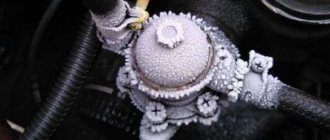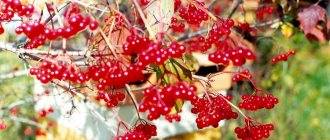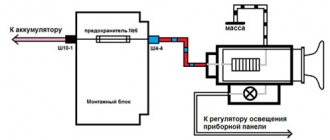Methods for removing trees from a site
How did the American maple appear in Europe?
In the middle of the 16th century, the seeds of the American (ash-leaved) maple were accidentally brought to Spain. Nobody paid attention to them, since local maple species had similar lionfish. But the light fliers were caught by the wind and scattered along the coast.
Over the course of a couple of centuries, the range of this plant has increased many times over. It was even used for landscaping cities. An unpretentious tree has no pests that can harm it. Therefore, the American maple is a weed that is ready to conquer any area where its seeds reach.
Already in the middle of the 18th century, the French press reported that trees coming from Spain were harming winegrowers in France. Methods for destroying maple trees were published there. For almost thirty years, periodicals have returned to the problems of eliminating this plant.
The recommendations were published in a brochure by Charles de Beauchet, “Comment éliminer l'érable sur un vignoble”, which was distributed in the provinces where the grapes were grown.
Interesting excerpts from this book are still relevant today: “...You need to fight the American maple as soon as the shoots appear.
An annual sprout that is uprooted can be easily and permanently removed. But if sufficiently powerful roots have formed and a trunk has formed instead of a stem, then a serious struggle with this tree awaits.
When cutting down, several new trunks are formed within a short time, now a more powerful plant is formed from the root. It’s much more difficult to fight it...” (literary translation from French by the author of the article).
How to remove maple from a site
The work does not begin on your own site. We need to find trees that spread the flies. If they remain nearby, then every year thousands of flying seeds will be brought into the garden. A certain part will be in favorable conditions, the seed will begin to grow, and by autumn another sprout will grow.
Of course, it is difficult to cut down a tree. Many defenders will certainly come to its defense, but you can convince and show the harm from such a plant. Instead, it is better to plant a linden, ash or other tree that will quickly grow in place of the maple. There will be much more benefits.
It is generally accepted that the main methods of removing maple will be:
- mechanical means removing annual trees, cutting down woody trunks and uprooting roots;
- chemical - poisoning of the roots and entire plant mass of plants;
- thermal is the burning of woody parts and roots.
To use one or another method, it is advisable to consider the features and evaluate the costs of each option.
American maple: an aggressive woody weed or an ornamental find
Ash-leaf maple or American maple (Acer negundo) is a deciduous tree of the maple family, native to North America. In the first half of the 20th century, it became one of the most common alien tree species in Russia.
Currently, the “newcomer” is included by experts in the “Black Book of the Flora of Central Russia” and is described as an alien (invasive) plant that can harm the ecosystem.
In squares, parks and gardens, American maple grows in the form of large, fast-growing, unpretentious ornamental trees up to 15 meters high, and under good watering conditions or in coastal areas - up to 20-25 meters . In street plantings and industrial areas, as well as on rocky soils - in the form of twisted tree stands with drying branches. At frosts below −10 ℃, it partially freezes, and in dry summers, burns may appear on the leaves.
Actively reproducing by seeds, the American maple bushes and takes over more and more new territories: abandoned arable fields, roadsides, landfills, forest edges and meadows along river banks, wastelands along railroads, displacing other tree species, for example, in floodplain oak forests and willow forests. With its aggressive behavior, it is very different from its close brother - the Canadian (sugar) maple, which grows peacefully in one place.
The trees bloom in May–June for two weeks, the winged fruit ripens in August–October.
A specialist talks about the varieties of ornamental plants of the maple family in the following video:
His main specialty is an accountant, so even at his dacha he strives for accuracy and achieving ideal order in everything. Preference is given to growing grapes. I am sure that the deeper you delve into gardening and gardening, the more you understand that there is no limit to perfection!
Found a mistake? Select the text with the mouse and click:
It is believed that some vegetables and fruits (cucumbers, stem celery, all varieties of cabbage, peppers, apples) have “negative calorie content,” that is, more calories are consumed during digestion than they contain. In fact, only 10-20% of the calories received from food are consumed in the digestive process.
“Frost-resistant” varieties of garden strawberries (more often simply “strawberries”) need shelter just as much as ordinary varieties (especially in those regions where there are snowless winters or frosts alternating with thaws). All strawberries have superficial roots. This means that without shelter they freeze to death. Sellers’ assurances that strawberries are “frost-resistant,” “winter-hardy,” “tolerates frosts down to −35 ℃,” etc. are deception. Gardeners must remember that no one has yet managed to change the root system of strawberries.
Tomatoes have no natural protection against late blight. If late blight attacks, any tomatoes (and potatoes too) die, no matter what is said in the description of the varieties (“variety resistant to late blight” is just a marketing ploy).
Compost is rotted organic remains of various origins. How to do it? They put everything in a heap, hole or large box: kitchen scraps, tops of garden crops, weeds cut before flowering, thin twigs. All this is layered with phosphate rock, sometimes straw, earth or peat. (Some summer residents add special composting accelerators.) Cover with film. During the process of overheating, the pile is periodically turned or pierced to bring in fresh air. Typically, compost “ripens” for 2 years, but with modern additives it can be ready in one summer season.
You need to collect medicinal flowers and inflorescences at the very beginning of the flowering period, when the content of nutrients in them is highest. Flowers are supposed to be picked by hand, tearing off the rough stalks. Dry the collected flowers and herbs, scattered in a thin layer, in a cool room at natural temperature without access to direct sunlight.
A new product from American developers is the Tertill robot, which weeds weeds in the garden. The device was invented under the leadership of John Downes (creator of the robot vacuum cleaner) and works autonomously in all weather conditions, moving over uneven surfaces on wheels. At the same time, it cuts off all plants below 3 cm with the built-in trimmer.
Oklahoma farmer Carl Burns developed an unusual variety of multi-colored corn called Rainbow Corn. The grains on each cob are of different colors and shades: brown, pink, purple, blue, green, etc. This result was achieved through many years of selecting the most colored ordinary varieties and crossing them.
Convenient Android applications have been developed to help gardeners and gardeners. First of all, these are sowing (lunar, flower, etc.) calendars, thematic magazines, and collections of useful tips. With their help, you can choose a day favorable for planting each type of plant, determine the timing of their ripening and harvest on time.
Humus is rotted manure or bird droppings. It is prepared like this: the manure is piled up in a heap or pile, layered with sawdust, peat and garden soil. The pile is covered with film to stabilize temperature and humidity (this is necessary to increase the activity of microorganisms). The fertilizer “ripens” within 2-5 years, depending on external conditions and the composition of the feedstock. The output is a loose, homogeneous mass with a pleasant smell of fresh earth.
>
- Author: Maria Sukhorukikh
Rate this article:
- 5
- 4
- 3
- 2
- 1
(0 votes, average: 0 out of 5)
Share with your friends!
Mechanical methods for removing maple from a site
Ash-leaf maple wood is loose and contains up to 78% water. This type is not suitable for construction or furniture making. Even as firewood, its use is not justified; high moisture content reduces the lower calorific value.
Fragile branches break easily with little force. It is easily chopped with an ax (you need to strike at an angle of 30...45 ⁰ to the axis of the trunk). It is convenient to use circular and chain saws for cutting.
The wide crown creates certain inconveniences for clearing the area. The branches have to be cut down to make it easier to carry the tree to the burning site. The wood itself can be used to shred and turn into mulch. Upon contact with soil, such mulch rots within two years and forms humus.
The roots are located quite deep, two to three year old trees penetrate to a depth of 1.5...2.0 m. In older trees, the roots penetrate up to 3.5...4.0 m. The root itself branches quite widely. Occupies an area 3...4 times wider than the crown of the tree covers.
Research has been conducted to determine the labor intensity of uprooting roots. It turned out that if you have the necessary tools, you will have to spend at least 3.0...4.0 hours.
The use of mechanization means reduces labor costs by approximately half. The force on the crane boom for uprooting a tree aged 3...5 years is more than 50 kN (5000 kg).
It is advisable to remove annual plants before the formation of a strong root. Already in the first year of life, it penetrates to a depth of 30 cm and forms side shoots. They try to gain a foothold in the soil.
When mowing with a regular or disc scythe, root suckers may emerge from the remaining root. They will form next spring. Therefore, when clearing an area of annual seedlings, it is advisable to dig out the roots.
Attention! Branches left behind can form a new root under suitable conditions. A new plant will appear that you will have to fight.
Stopping light from reaching the stump
Among the mechanical methods of fighting there is a rather original one. It was described in an 18th-century French pamphlet. After cutting down the trunk, it was recommended to completely cover the remainder with straw.
Using dark packs
https://www.youtube.com/watch?v=un_nA2bw2uU
How to get rid of maple on a site if there are a lot of trees there?
Trees need warmth and sunlight to grow. It will not be possible to make the temperature in a separate area sub-zero. But it is possible to deprive a small piece of territory of light. If you remove access to light from the stump, it will stop sprouting.
We invite you to familiarize yourself with Landscaping of the local area of an apartment building
First, trees are cut some distance above the ground. Take dark, durable bags and put them on the cut trees. They are securely fixed with tape or other available methods. This is necessary to prevent the packages from being blown away by the wind. After all, they must remain on the stumps for a long time.
The disadvantage of this method is that it can be quite difficult to process a large area. If there are a lot of stumps, the process of putting the bags on can take a lot of time and effort. If you need to get rid of several stumps, it can be used. This is an environmentally friendly way. Of course, if the bags are removed and disposed of over time.
If the tree is cut down at the root, it is more difficult to tie a bag to it.
Chemical methods of controlling ash maple
Using table salt
One of the cheapest reagents for controlling plants is table salt. You can purchase an unrefined coarse-grained mineral; it is sold for livestock farms.
Holes are drilled into the stump to a depth of 10...12 cm. It is most convenient to use a percussion Ø 12...20 mm. For thick stumps, you need to drill several holes; they are placed closer to the periphery. If the trunk is no more than 12 cm, it is enough to drill one.
They are filled with salt. Leaving a little space, hammer in a cork (can be made from a branch of a given tree).
Application of mineral fertilizers to destroy maple
Experience shows that any type of mineral fertilizer can be detrimental to a tree. You just need to use them in sufficient quantities. High salt concentrations contribute to wood decomposition and tree death.
Proceed by analogy with how the use of salt is described.
- Drill holes.
- Fertilizer is added.
- Traffic jams.
In practice, it has been found that the cheapest option is to use sodium or ammonium nitrate. The use of urea gives good results.
Mineral salts burn the inside, they spread inside the roots. After a year and a half, the maple turns into rotten wood, which can be used as organic fertilizer.
Some gardeners use a similar method without cutting down the trunk. Holes are drilled in the spring. They try to deepen it to 15...20 cm. The diameter can be made only 10...12 mm.
They are placed at a height convenient for using an electric drill (80...12 cm from the ground). Drilling is performed with a slope, directing them down. All that remains is to fill in the granules or pour the concentrate inside, and then hammer in a tight plug.
After such treatment, by autumn, trees whose age does not exceed 7...10 years die. For more powerful maples, the operation is repeated a year later - not a single tree has survived double treatment.
Using pesticides to control American maple
Chemical weed control products are excellent for eliminating maple weeds. Herbicides: Roundup, Tornado, Ground and many others are excellent for killing annuals. It is enough to spray the green foliage. Subsequently, toxic substances will penetrate inside the plant.
First the green part will die, later the poison will penetrate into the root part. The weedy maple seedling will die within 20…30 days.
Trees are treated differently. The tree is cut down, and a concentrated solution is applied to the remaining stump. In two to three months the root part will die off. It is uprooted or burned on the spot. Sometimes you just have to use firewood.
You can find other ways to remove maple from a site, but their effectiveness will be lower. In this case, the cost of work will be higher. It is important to remove trees without polluting the surrounding environment.
Destruction of the American maple.
There is a chemical that is used to destroy trees and shrubs. This drug is called an arboricide. It is worth saying that coniferous trees are less sensitive to it. Arboricide is commonly used to remove trees and shrubs.
Chemical methods of destroying trees - instructions with pictures.
How to get rid of American maple?
American maple is a very tenacious plant, moreover, it constantly reproduces (we have one growing in our garden, new trees are constantly appearing around it). If you don’t want to use chemicals, cut down the maple itself, pull out the shoots around it, cover the stump with firewood and set it on fire. If it survives after this, you can try cutting off the sprouts or watering it with water and salt (but this method is questionable and not safe for the soil).
Personally, we destroy the sprouts, but do not touch the main tree - at least some green spot.
How to get rid of American maple?
The American maple is not so easy to destroy if it decides to settle on the site. Burning and root cutting are not always effective in controlling American maple.
Friends managed to get rid of the American maple growth by watering the trees at the roots with a solution of salt and the drug “Tornado”. To a bucket of water you need to add 1 kilogram of salt and the weed killer “Tornado” in the proportions as indicated in the instructions. The method worked; the American maple was eradicated from the site.
Experienced summer residents highly recommend an effective remedy for combating American maple - the drug “Roundup”. Roundup is an all-purpose weed control product. The drug affects not only the shoots and leaves, but also the root system of the plant. It is necessary to spray the leaves and shoots of the maple with the preparation, as indicated in the instructions. The tree will die 2 weeks after treatment.
Using kitchen salt
How to get rid of an American maple if there is a wide stump from a cut tree on the site, and you have neither the energy nor the time to uproot it? You can try to get rid of it using chemicals. The simplest thing is to sprinkle the stump with salt. To do this, use a chainsaw or a regular saw to make a crosswise cut. The deeper it is, the better.
Take kitchen salt and fill in the resulting cuts. Leave salt on the surface of the hemp.
As a result of such actions, the tree may soon dry out and not produce new shoots. But this may not happen. It all depends on the strength of the root system. Salt, of course, is not really needed by the soil. But the quantity is usually small, and it is unlikely that it will be possible to plant potatoes in place of a stump soon.
Chemical methods of eliminating trees
There are many ways to ensure that a tree on your site dries out quickly. However, the most common of them are those that involve the use of chemicals. preparations intended to destroy plants. And no matter how harmful these products can be, they nevertheless allow you to complete this work as quickly as possible.
Chemical methods of destroying trees
More specifically, the following chemical methods of destroying trees are distinguished:
- watering plant tissues with chemical compounds;
- coating leaves with special preparations;
- grafting that kills trees;
- placing the drug in the ground next to the trunk;
- complete destruction (including the stump);
- applying a chemical to the bark.
Important information! Note that most of the chemicals described below affect the root system of trees. When choosing a specific composition, be sure to take into account the composition of the soil. There are products that act on the bark or living tissues of plants.
Ideally, the tree should be cut down altogether and the remaining stump properly treated. This way you can get rid of the tree as quickly as possible. Be that as it may, first let’s get acquainted with the most effective means and features of their use.
Where do the “extra” trees come from?
Uninvited trees appear on the site in several ways. Some grow from seeds carried by the wind, birds or other means. There are usually not many such trees, unless they appear on the site for several years.
It is worse if the shoots appear from the roots of plants growing nearby. How to get rid of maple in this case?
We invite you to familiarize yourself with the recipe for watermelon jam made from pulp with gelatin.
The easiest way is to cut it with a scythe. Some of the shoots disappear forever. But in most cases they begin to grow, and instead of one stem a whole bush appears.
If for some reason an adult tree is unnecessary on the site, it is usually cut off, leaving a stump. The stump itself can interfere in the future, but more often the root system, located within a radius of several meters from the trunk, or root shoots from it.
Popular chemicals for killing trees
If you intend to use chemicals, you must choose the most suitable option. Below is a list of the most effective (according to summer residents) chemical agents.
- Sodium nitrate . As a rule, it is used to destroy stumps, but in our case it should be applied not only to the tree trunk, but also to the ground. To get the desired effect as quickly as possible, it is advisable to inject sodium nitrate into the hollow. In about a year, the tree will be completely dry - then it can be burned. And if you water the soil with this saltpeter, the tree will dry out only after a few years.
Nitrate (sodium nitrate)
This urea-based nitrate accelerates the process of wood decomposition, and the tree roots turn into fertilizer
Note! A tree is still a living organism, which should be killed only in extreme cases. Don't get too carried away with this procedure.
Now, having familiarized ourselves with the main chemicals that can quickly dry out wood, let’s consider which treatment methods are the most popular. Some of these methods involve the use of one or another of the drugs described above.
The main methods of destroying trees with chemicals
Let’s immediately say that there are many such methods, so we will consider only the most effective of them.
Method No. 1. Application of chemicals to living tissue
The tree bark is an obstacle due to which herbicides cannot penetrate the vascular tissues of the plant. Therefore, in order for the product to reach its destination, make downward cuts on the surface of the trunk, but do not tear off the bark. Use a small ax for this. As a result, notches and cuts should be made along the entire circumference of the trunk.
Application of preparations to living wood tissue
Use the herbicide you have chosen after making the cuts - apply it to the wood tissue.
Making cuts on a small tree
Note! Do not use herbicides in the spring because the sap that oozes from the cuts will prevent the chemical from absorbing.
Method No. 2. Watering the soil with herbicides
Individual preparations can be used for uniform application to the soil surface. After rain or artificial watering, the herbicide will enter the root system. To concentrate the chemical in one place, you can resort to installing barriers in the ground (for example, concrete).
Note! This method is advisable to use in cases where it is necessary to destroy several or many trees at the same time.
Method No. 3. "Killer" injections
They are very close in their principle of operation to method No. 1, and differ only in the fact that special devices are used to introduce chemicals into the tissue. The maximum effectiveness of the methods is achieved if a targeted effect is applied around the circumference of the trunk in increments of 5-10 cm. Injections are made at a height of approximately 1 m from the ground. The method is used for trees whose trunk diameter exceeds 5 cm.
Step 1. First, prepare a drill, as well as a drill bit for it, the diameter of which is 5-10 mm.
Step 2. Make holes 4-5 cm deep as described above. It is important that the drill is at an angle of 45-50° relative to the ground surface when working.
Holes in the barrel
Step 3. Take a simple pharmacy syringe, fill it with a product whose active ingredient is glyphosate (for example, “Ground”, “Tornado”, etc.), or, alternatively, pour the chemical directly into the holes. The concentration of glyphosate in the product must be at least 200 g/l.
Take a regular syringe
For example: to dry a tree with a trunk diameter of 35 cm, you will need 35-40 ml of a product in which the concentration of glyphosate is 360 g/l.
Step 4. Seal the holes with earth to hide traces of injections, remove the shavings and see if the drug leaks out (the latter is good because it dries for a long time and is clearly visible on the bark). Soon enough the plant will begin to dry out.
Useful tips and tricks
Below are some helpful tips to help you remove your unwanted tree.
- The person who destroys trees with chemicals bears full responsibility for the final effect.
- Remember that the accuracy of the application can be improved by adding a coloring agent to the herbicide. Trees that have been treated this way are much easier to track, so you are less likely to miss them when re-treating them (if necessary).
- Trees can “cork” cuts and damage, thereby protecting themselves. In other words, a protective layer is formed around damaged tissues, which can reduce the effectiveness of the drug used. For this reason, when using method No. 1, the chemical must be applied immediately after making the cuts.
The cuts seem to be healing
Note! It is believed that on the eastern side the root system grows to the height of the crown, while on the western side it grows to ½ of this height. You can use this rule of thumb.
Alternative Methods
There are also several alternative ways to make the tree dry out quickly. Let's look at the most effective, and therefore popular, ones. For the convenience of visitors, the information below is presented in table form.
Table. How else can you treat wood to make it dry?
Method No. 1. Using salt
Method No. 2. How to cover roots
Method No. 3. Shutting off the air supply with mulch
Note! By the way, if the roots are blocking the sewer line, you can use Root Destroyer (if you can find it), which you just need to flush down the toilet. This way you will only kill the roots that have penetrated the network, but will not harm the tree.
When the tree dries out, it is cut down and burned. But after this, roots remain in the ground, which can also cause a lot of trouble. Below is a short guide to mechanically removing a stump.
Video - How to remove a stump using a chemical method
| It has long been known that salt destroys vegetation when it enters the soil. Therefore, salt can easily destroy the roots and the tree itself. It is advisable to use a salt solution if you are concerned that the vegetation near the tree may also be destroyed. Water the soil with the solution while it absorbs it. The salt concentration depends on the size of the tree (the larger it is, the more it should be). | You can block the flow of moisture and oxygen to the roots - to do this, you just need to fill them with concrete to the very base of the trunk. After 2-4 weeks, the roots will die, and the tree itself, accordingly, will begin to dry out. This method is advisable if a path is planned to be built in place of the tree. | The method resembles the previous one, but is more attractive and environmentally friendly. Place a layer of mulch (from 15 cm) over the roots and up the tree itself. This will partially block the supply of nutrients, and the tree will slowly begin to die. |











